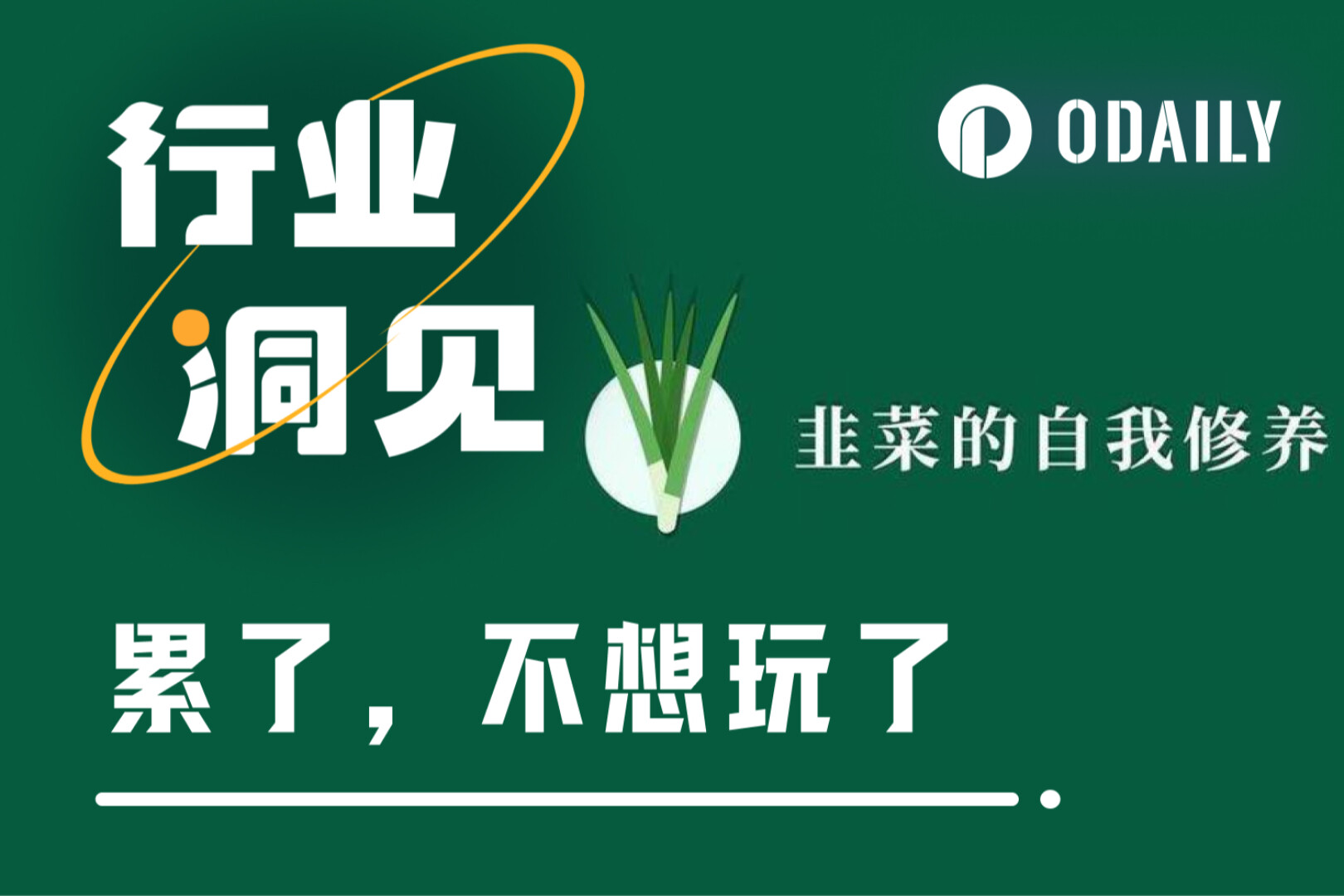Original author: @zhouKelvinZzzz
Original source: @TechFlame_News
In the second half of 2025, Solana quietly changed its slogan from "Web3 Infrastructure for Everyone" to "Global Financial Infrastructure for Everyone" on its official website. This change actually demonstrates that Solana is strengthening its financial position—the image of blockchain technology has taken a backseat, and financial infrastructure has become the main focus.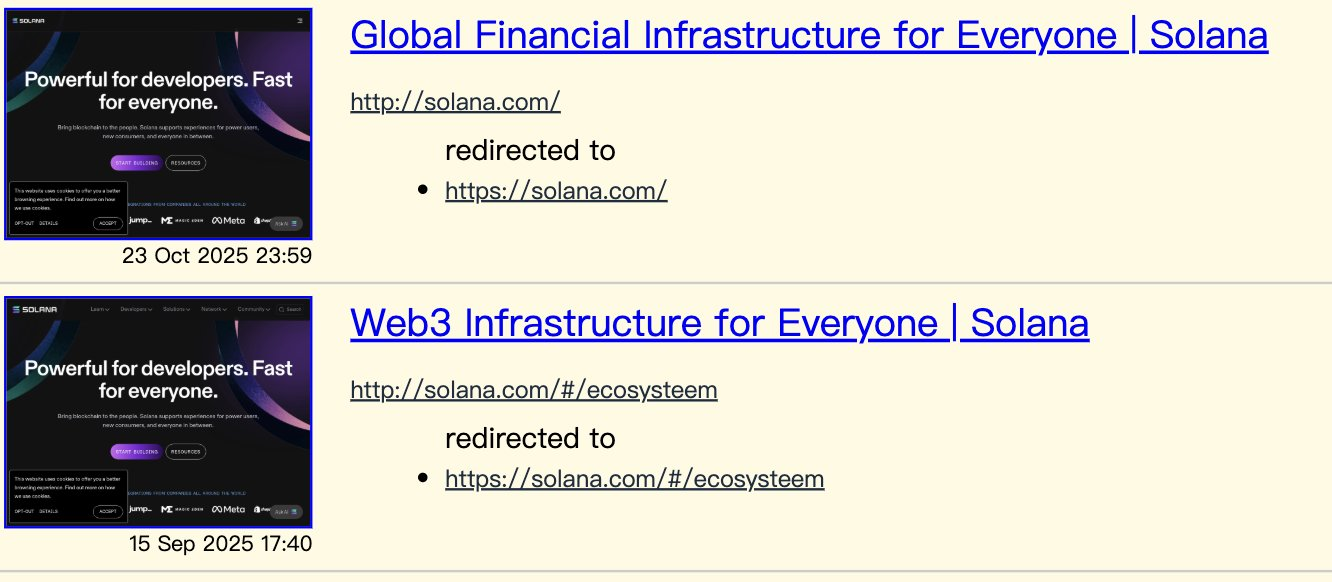
The implications behind this are profound—Solana is proactively transforming "blockchain technology" into infrastructure, emphasizing its financial attributes and institutional application capabilities. Solana's financialization strategy is gaining substantial support and investment from major financial institutions (such as Visa, Stripe, PayPal, Apollo, BlackRock, etc.). Institutional participation has entered a stage of product implementation and large-scale activity, rather than normal technological exploration or a focus on conceptual institutions.
Solana is poised to become the default platform for asset issuance, stablecoins, RWA management, and financial innovation for an increasing number of traditional and emerging financial institutions. Unlike simply investing in Solana's price in the past, this new era is more about "doing finance with Solana," transforming on-chain infrastructure into a true network for global capital and financial markets. This role upgrade will elevate Solana from a Web3 foundational tool to a global internet capital network, enabling deeper integration of institutionalized financial value and compliant applications.
Strategic Positioning Transformation: From Infrastructure to Dedicated Financial Platform
In 2025, as the Meme craze subsided, the market began to reflect on the long-term prospects of Solana: besides the meme coin effect, what else does Solana have left?
In fact, with increasing market attention, Solana has completed a comprehensive leap from technology prototypes and basic ecosystem construction to application modules over the past two years.
In the past, most people focused on traffic sectors and "blockbuster innovations" on the blockchain, but when you delve into the Solana ecosystem, you will find that the financial infrastructure is accumulating strength and making great strides - professional fields such as DeFi, assets, stablecoins, RWA, AI, and NFT are becoming the mainstream growth drivers. 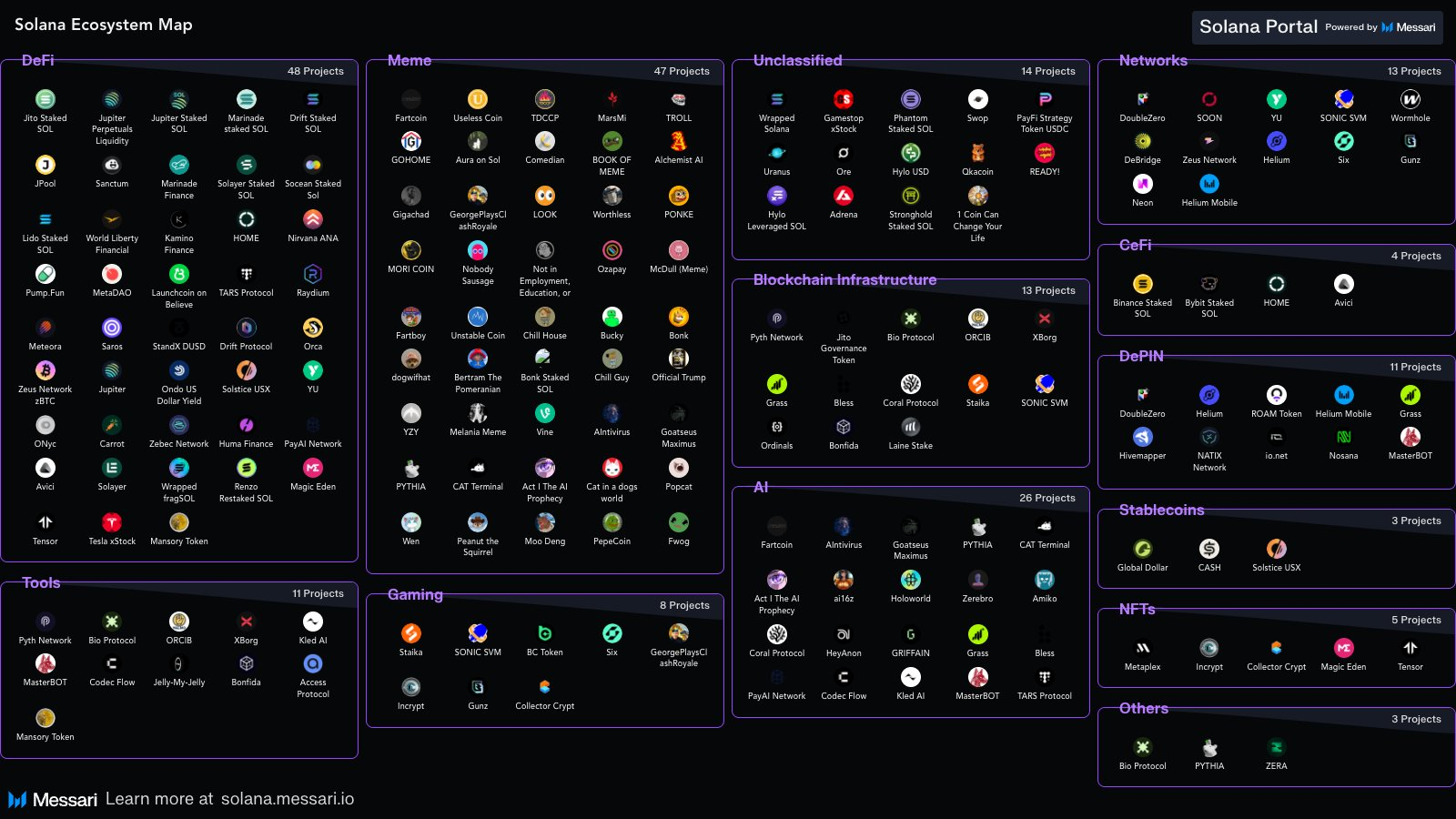
Source: https://solana.messari.io/landscape
With the gradual improvement of various infrastructure and ecological elements, Solana has finally found a development path that focuses on financial infrastructure.
From a technical perspective, this is not just wishful thinking:
- Time dimension : Traditional systems run from 9 am to 5 am on weekdays, while Solana runs 24/7 without stopping.
- Speed : Traditional transfers take 1-5 days, Solana confirms in 2-3 seconds.
- Cost dimension : Traditional international transfers cost $15-50, Solana costs $0.0005.
- Processing capacity : Actual TPS reached 869 (1-hour average), peak 5,289 TPS
Stablecoins, Today's On-Chain Treasury (DAT), RWA assets, institutional custody, and integrated payments have become the most critical growth engines of the ecosystem, attracting continuous investment from global financial institutions and capital. This not only completes the construction of "blockchain tools" but also marks a new stage in the development of global financial infrastructure.
Solana's financial strategy to achieve a breakthrough by 2025.
Solana is moving into finance.
On October 23, 2025, at the 11th Wanxiang Global Blockchain Summit, Lily Liu ( @calilyliu ), Chair of the Solana Foundation, delivered a keynote speech entitled "Building a New Finance," publicly outlining Solana's financial positioning.
"Solana is to finance what Netflix is to entertainment and Amazon is to shopping—an internet-scale disruptor growing at an unprecedented rate, redefining the path of modern finance."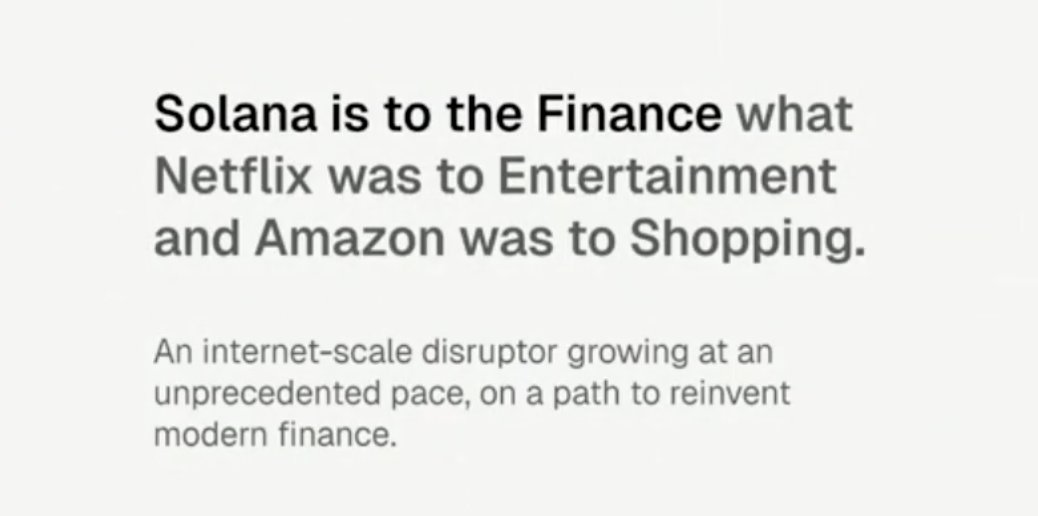
The core of this analogy is that the new platform not only revolutionized the product form, but also expanded the ways in which users obtain services.
- Netflix has freed entertainment from being confined to television/cinemas, transforming it into anytime, anywhere streaming on demand.
- Amazon has transformed shopping from offline to a one-click online e-commerce experience, enabling instant and borderless consumption.
- Solana will leverage the limited improvements and processes of traditional banking/exchange financial services to enhance, automate, and simplify on-chain finance.
Solana's Financial Breakthrough
1. Digital Asset Treasury (DAT): Solanaization of Institutional Capital
Market size breakthrough
- According to data tracked by CoinGecko, 19 publicly traded companies collectively hold 15.4 million SOL (approximately $3 billion), representing 2.5% of the circulating supply.
- Committed investment capital exceeds $4.3 billion , including PIPE financing, ATM program and convertible bonds.
- With an annualized growth rate exceeding 100% , the holdings are projected to double by 2026.
Performance of leading companies
The following are the specific performance results of DAT companies. 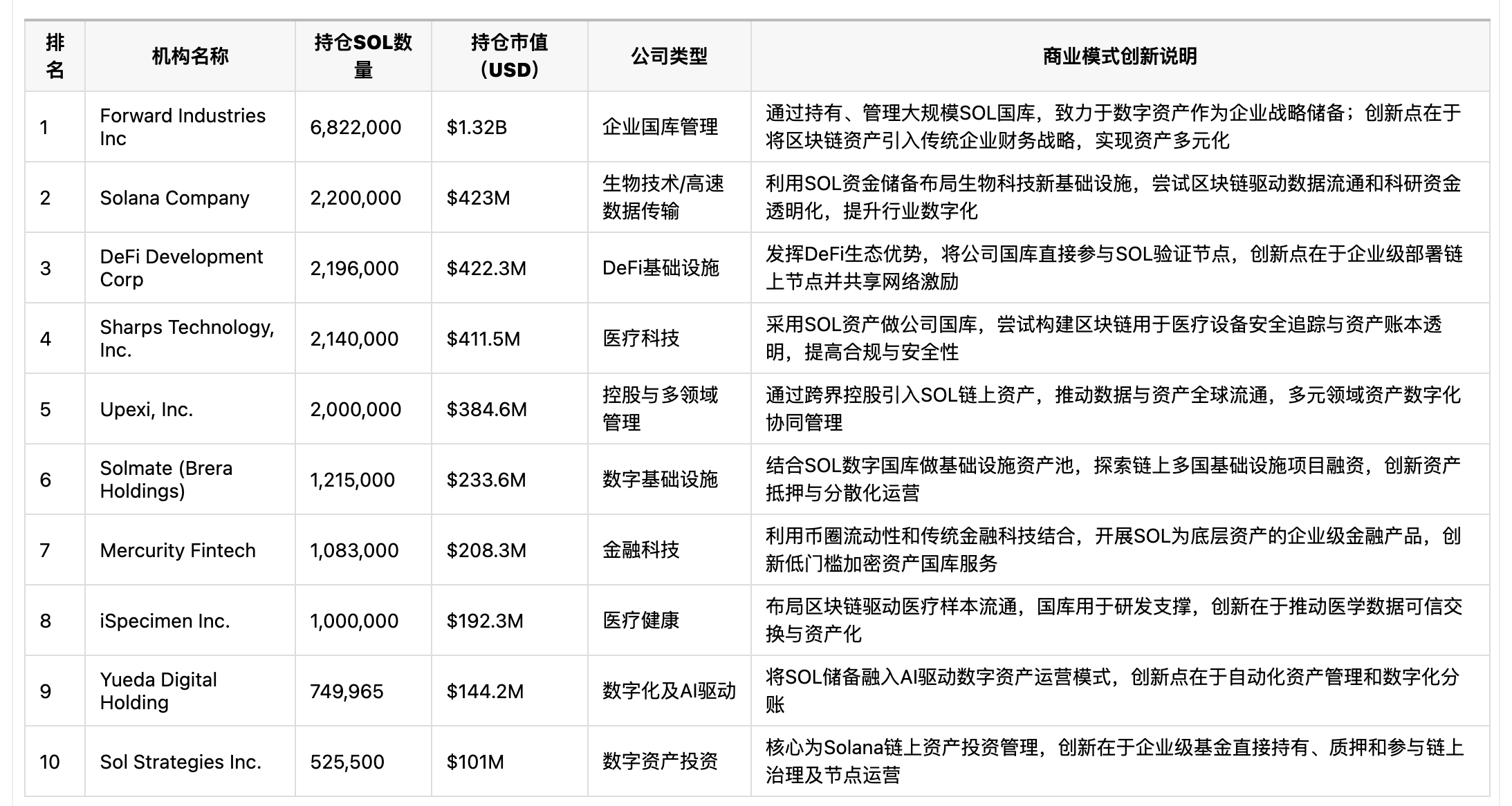
Source: rwa.xyz
DAT Analysis
1. Compared to BTC and ETH, SOL offers higher on-chain real-world returns:
Multicoin Capital points out that SOL offers returns that BTC and ETH lack. Compared to Bitcoin, SOL stakers on Solana earn a higher annualized return on average. The annualized return for SOL staking is approximately 8%. Of this, about 6.19% comes from inflation issuance, and the remaining 1.86% originates from real-world economic activity and MEVs on-chain. This cash flow driven by real-world transactions and MEVs makes SOL more attractive as a long-term capital and underlying asset for digital asset treasuries (DAT).
2. DAT company can achieve higher capital utilization:
DeFi directly matches loans through blockchain and smart contracts, eliminating the need for intermediaries such as traditional banks, thus typically significantly reducing operating and matching costs.
Arbitrage opportunities arise by comparing the interest rate spread between traditional bank financing costs for listed companies and DeFi financing costs. DeFi offers a network-native financing model that is intermediary-free, lower-cost, and more transparent, while the traditional banking system is characterized by centralization, high costs, and stringent approval processes. This type of DeFi arbitrage not only offers high profit margins but also allows for interaction with numerous counterparties through various methods, creating diverse profit models.
2. Stablecoin Ecosystem: The Core of Payment Infrastructure
Explosive growth in supply
- The total supply of the Solana stablecoin surged from $5.2 billion at the end of 2024 to $16 billion.
- It saw a year-on-year growth of 170% , becoming the third largest stablecoin blockchain after Ethereum and Tron.
- USDC dominates ($10.6 billion), while USDT is experiencing rapid growth ($4.5 billion). The surge in Solana stablecoins in early 2025 coincided with the launch of Donald Trump's meme coin, $TRUMP, triggering a wave of capital inflows into the network. Trump meme coins spread across various sectors, including politics, finance, and entertainment, quickly breaking down the boundaries of traditional crypto communities and injecting significant liquidity and new community energy into Solana and the industry as a whole. Simultaneously, new regulations such as the US GENIUS Act brought compliance benefits to the stablecoin industry, leading to a dramatic increase in the number of compliant stablecoins issued and used by enterprises and users on the Solana chain.
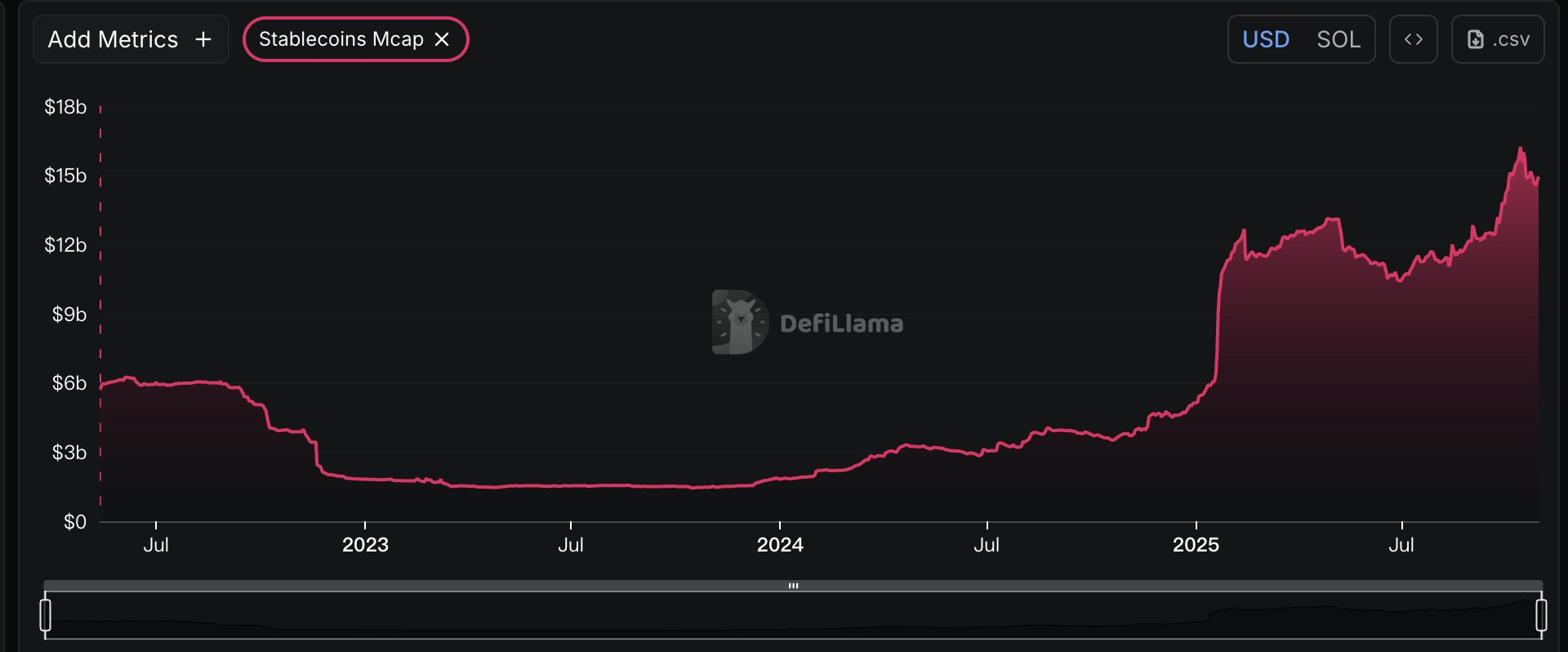
Source: https://defillama.com/ 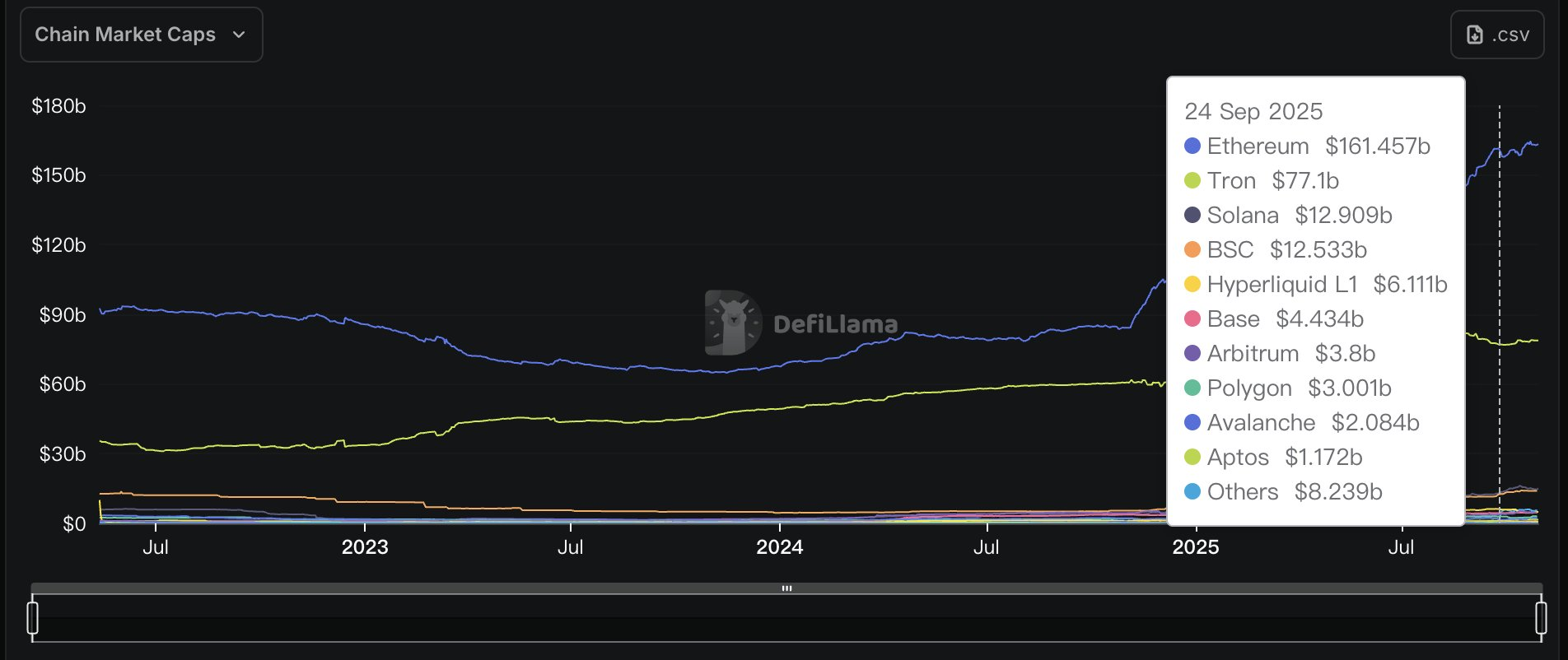
Source: https://defillama.com/
3. Payment Infrastructure: From Pilot to Production Deployment
Payment Infrastructure: From Pilot to Production Deployment
In 2025, Visa officially announced the integration of Solana into its stablecoin settlement platform, marking Solana's formal entry into the traditional financial production environment from its early experimental stage. This milestone placed Solana alongside Ethereum, Stellar, and Avalanche, supporting real-time card settlement services for major stablecoins such as USDC and EURC.
Visa's construction of a multi-chain, multi-currency stablecoin settlement architecture enhances the liquidity and payment efficiency of funds on the Solana chain, providing banks, fintech companies, and merchants with a faster and lower-cost payment experience.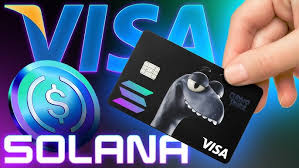
Payment volume achieves rapid breakthrough
Solana's monthly stablecoin trading volume has reached $50 billion, with 3 to 4 million daily active users, demonstrating a strong user base and financial momentum.
With increased merchant acceptance, over 6,000 merchants are accepting crypto payments through Solana Pay, and transaction fees have dropped to approximately 1%, greatly promoting the adoption and practical application of crypto payments.
Real-world business application cases
- Mastercard partnered with MoonPay to successfully connect 3.5 billion Mastercard cards to the Solana wallet, enabling consumers to seamlessly use their credit cards to interact with the Solana ecosystem and promoting the everyday use of digital assets.
- E-commerce platform Helio has partnered with Shopify to launch an instant encrypted checkout solution, effectively avoiding the risk of order cancellations in traditional payments and providing online retailers and consumers with a safer and more convenient payment experience.
- Western Union has announced the launch of USDPT, a stablecoin on the Solana blockchain, with the USDPT payment token expected to launch in the first half of 2026. This will provide more convenient international money transfer services to Western Union’s more than 100 million customers, while also significantly reducing costs and speeding up transactions.
Below we will make a simple comparison:
In summary, the integration of stablecoin settlements has propelled the Solana payment infrastructure from the pilot phase to large-scale commercial deployment. Coupled with the increasing on-chain transaction volume and rich ecosystem partnerships, this has solidified Solana's important position as a next-generation global payment network.
4. Integration of Traditional Finance: A Bridge to Trillions of Assets
R3 Corda Bridging: Deployed Solution
On September 4, 2025, R3 Labs officially launched , bridging $17 billion in RWA assets on the Corda network to Solana through native interoperability.
- Instant availability : Bonds, funds, and more can be traded on Solana 24/7.
- Trustless : Native cross-chain, no third-party custody required
- Economies of scale : Connecting with institutional clients such as DTCC and Nasdaq
Institutional-grade managed solutions
- Helius : Manages 13 billion SOL entrusted staking, providing enterprise-level services to companies such as The Solana Company.
- Anchorage Digital : Provides federally licensed SOL custody and integrates with Jupiter DEX to enable DeFi access.
- BitGo : Adds Solana support, serving institutional ETFs and corporate treasury accounts.
5. ETF Progress
1. Global Solana ETF Compliance Overview
In 2025, the Solana spot ETF officially entered the global mainstream capital market, becoming the first mainstream Layer 1 asset after Bitcoin and Ethereum to achieve the dual innovation of "spot trading + staking". ETF applications and launches have been carried out in the United States, Hong Kong, Canada, Singapore and other regions, promoting the financial transformation of institutional and retail users to participate in the SOL ecosystem in a compliant manner.
- US : The SEC has accelerated the approval of SOL ETFs, with leading institutions such as Bitwise (BSOL) and Grayscale (GSOL) receiving approval for spot and collateralized ETFs. These ETFs allow investors to not only hold SOL assets but also automatically receive collateralized returns, with the ETF net asset value including annualized returns.
- Hong Kong : China Asset Management has become the first company in Asia to list the first Solana spot ETF, which is a pure spot holding and does not yet have a collateral function. It has a low trading threshold and high compliance and security.
- Canada/Singapore : Several asset management companies are exploring spot + collateralized fund products, with financing and custody models gradually converging with those of the US and Canada, driving regional innovation.
2. Spot ETFs vs. Pledged ETFs: The Underlying Logic Behind Institutional Favorites
- Spot ETFs : These ETFs directly hold SOL and circulate through traditional securities accounts, allowing investors to easily participate in SOL price fluctuations. They are suitable for retail and institutional clients who value liquidity and have low entry barriers.
- Staking ETFs : The fund will stake its SOL holdings on-chain to earn an annualized return of approximately 7%, which is directly added to the ETF's net asset value. Investors do not need to participate in on-chain node operations. The US and Canadian markets have already implemented automated return distribution, enhancing product attractiveness and capital utilization efficiency.
3. Investment Impact and Industry Significance
The globalization of the Solana ETF not only lowers the technical barriers to blockchain investment but also promotes market compliance and transparency. The emergence of collateralized ETFs signifies that digital assets can drive real cash flow and improve capital efficiency, becoming an important vehicle for DeFi, corporate treasuries, and RWA management. The Solana ETF has become a bridge and innovation engine for traditional finance to enter the crypto market.
Summary of Solana's Financial Ecosystem Closed Loop
Solana is building a new global financial infrastructure that creates a closed loop in the financial system through "deposit entry points" for traditional and innovative assets and "fund flows" in on-chain application scenarios.
- ETFs and DAT – Lowering the entry threshold allows institutional and public funds to flow into ETFs (Exchange Traded Funds) and DAT (Digital Asset Treasury), opening the door for fiat currency/capital to enter the Solana ecosystem for institutions, enterprises, and investors. ETFs make SOL a compliant mainstream asset, while DAT enables corporate treasuries and listed companies to achieve on-chain asset management and strategic reserves, driving the inflow of tens of billions of US dollars.
- Together, these factors provide Solana with a sustainable and institutionalized supply of funds, solidifying its position as a global financial institution.
- On-chain stocks and RWA—asset digitization, a new form of capital market. Applications such as enterprise digital treasury, RWA (Real World Asset), and on-chain stocks promote the issuance, custody, and trading of traditional assets, funds, and bonds on the Solana chain, introducing a highly transparent and highly liquid digital asset management model to the capital market.
- The innovative practices of leading companies are driving the integration of real-world industries with blockchain finance, enabling global funds to move from "on-chain management" to "on-chain usage".
- Stablecoins and payments – With the booming development of fund usage scenarios and the active on-chain economy, stablecoins (such as USDC and USDT) have become the core foundation for on-chain payments and circulation on Solana, with rapid growth in supply and transaction volume, promoting efficient and low-cost realization of merchant settlement, user transfers, and corporate fund circulation.
- Through stablecoin payments, the Solana network has become the infrastructure for global payment giants such as Visa and Mastercard, processing billions of dollars in transactions daily, with cross-border costs and speeds superior to the traditional financial system.
In summary, Solana has achieved a closed-loop financial ecosystem of "capital inflow → on-chain circulation → application scenario expansion". From attracting mainstream funds through ETFs and DAT, to creating actual circulation through stablecoins and payments, and then to the deep implementation of enterprise and on-chain asset scenarios, it has achieved a comprehensive leap from underlying foundation to institutionalized application, becoming a pioneering network for financial digital transformation.
Solana power from the East
I. Compliant ETF Innovation: Progress of ChinaAMC ETF and Solana for Eastern Countries
1. Hong Kong becomes the first city to list Solana spot ETFs.
On October 27, 2025, the Solana Spot ETF issued by China Asset Management (Hong Kong) was officially listed and traded on the Hong Kong Stock Exchange, marking the first time that the Asian capital market has integrated with the Solana ecosystem. Unlike the "spot + collateral" innovation in the US and Canadian markets, the Hong Kong ETF currently only holds native SOL and does not offer on-chain collateral rebates, fully reflecting a stable and compliant approach and adapting to the high standards of custody and regulation in the local market. The ETF supports multi-currency settlement (HKD, USD, CNY), significantly lowering the barrier for Asian investors to enter the Solana ecosystem.
2. ETF Updates in East Asian Countries such as South Korea and Singapore
While South Korea and Southeast Asia have not yet officially approved Solana spot ETFs, institutional interest continues to rise. Singapore and Australian capital markets have seen trials of derivative ETFs and fund-type products targeting Solana, with some Singaporean mutual funds attempting to align with the spot ETF model in the US and Canada, opening up local compliance channels. South Korea's Upbit has opened up Solana asset on-chain and circulation services, promoting compliant innovation.
3. Compliance-driven breakthroughs in collateralized lending innovation
Currently, most Asian ETF products are purely spot-based and do not involve collateralized returns. This is related to the high standards of control that the Hong Kong Securities and Futures Commission and the Monetary Authority of Singapore have for node security and third-party custody. In the future, as security solutions mature and regulatory pressure eases, collateralized ETFs are expected to be launched in Asia, driving SOL's "holding + earning interest" model to become mainstream and participating in the global blockchain economy.
II. Enterprise-level Applications: Solana's Partnership Model with Leading Local Enterprises
1. CMB International and On-Chain RWA Innovation
In August 2025, CMB International, in collaboration with DigiFT, Singapore's OnChain, and Hong Kong and Singapore mutual funds, pioneered the issuance of USD money market funds as RWA assets. Custody and distribution utilized the Solana multi-chain ecosystem, promoting the "on-chain subscription" of Hong Kong and Singapore fund products and strengthening the integration of financial institutions with on-chain infrastructure. This move significantly improved the efficiency of digital circulation of "real-world assets" and broadened traditional financial compliant asset custody methods.
2. Huawei Cloud and Solana
Huawei Cloud has been actively developing Web3 infrastructure, distributed computing, and enterprise multi-chain services. Solana, a public blockchain with high performance and an active developer ecosystem, has demonstrated strong potential in the Asia-Pacific region and in enterprise-level application expansion. Combining cloud service providers' needs for on-chain high-frequency trading, data storage, and node hosting, Huawei Cloud is expected to provide more stable, compliant, and efficient infrastructure support for the Solana ecosystem. This will enable Asia-Pacific enterprise customers to directly connect on-chain data with cloud systems, promoting the integration of fintech and the real economy.
We also saw @Solana_zh and Huawei together at this year's Token2049 event.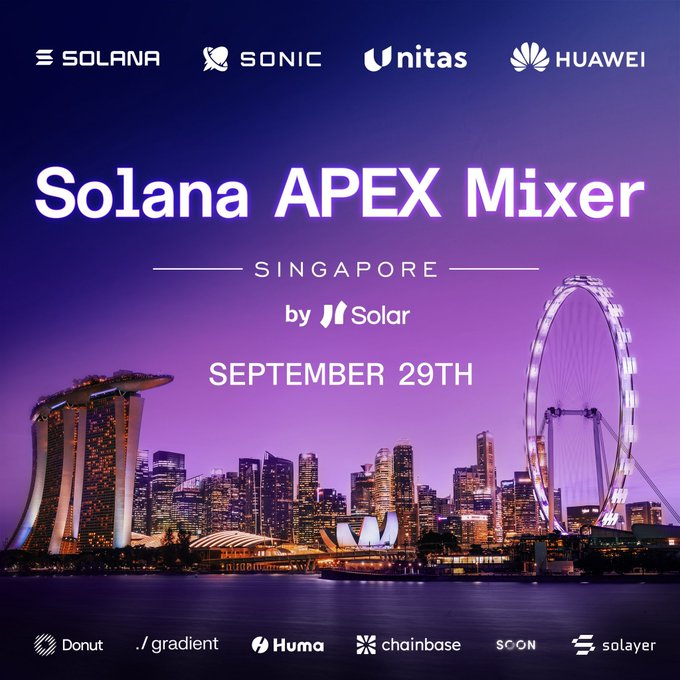
III. Transformative Forces in the Asia-Pacific Region: Solana's Ecological Development in Japan, South Korea, and Southeast Asia
1. Ecological revitalization in South Korea and Japan
South Korea's open blockchain policy has enabled the rapid penetration of the Solana ecosystem. Exchanges such as Upbit have opened up Solana asset on-chain circulation services, and many South Korean capital and internet companies are exploring cooperation with Solana DePIN (a distributed physical infrastructure network) to achieve implementation in multiple areas such as data storage, IoT device settlement, and Web3 applications. Japanese capital continues to invest in Solana NFT and DeFi projects, promoting global innovation and local cooperation.
2. The Web3 High Ground in Southeast Asia
Vietnam, Thailand, and Singapore have become Solana's largest user base and a high-density innovation hub in the Asia-Pacific region. The annual Asia-Pacific Solana Summit attracts thousands of entrepreneurs and development teams, fostering new projects such as native stablecoin applications, cross-chain RWA protocols, and on-chain data hosting. Solana's high TPS, low latency, and low cost characteristics perfectly align with the mobile, payment, and cross-border financial needs of Southeast Asia.
3. DePIN and Hardware Industry Collaboration
The Asia-Pacific manufacturing and hardware supply chain has become the main manufacturing base for Solana DePIN project equipment. China, Vietnam, Malaysia, and other regions provide basic hardware such as mining machines and mobile nodes to the world, supporting Solana's distributed computing power needs. The huge population dividend and the widespread adoption of mobile internet are accelerating the implementation of daily applications of the Solana ecosystem in areas such as mobile payment, gaming, audio-visual entertainment, and digital identity.
4. Community-driven and accelerated innovation
The large digital native population and young, highly active communities in East and Southeast Asia make Solana one of the most dynamic public chains in the Web3 ecosystem, driving global liquidity and innovation to "flow in from the East," and forming a collective participation and integration of capital, projects, and users from both East and West.
summary
Solana's strength in the East not only leads the world in ETF compliance breakthroughs, but also extends blockchain from financial investment to real-world industries, data asset custody, and innovative finance through collaborations with large local enterprises such as CMB International and Huawei Cloud. The prosperity of the Japanese, Korean, and Southeast Asian markets, along with the rapid growth of hardware and user communities, has shaped Solana's new landscape in the East, providing a new model for the deep integration of global Web3, capital markets, and the real economy.
in conclusion
With Solana's strategic leap from the underlying Web3 technology to a global financial infrastructure standard by 2025, the entire ecosystem is profoundly impacting fintech, capital markets, and institutional innovation. Solana is not only reshaping the efficiency and models of financial services but also opening new pathways for enterprises and institutions in asset management, payments, investment, and compliance. In the future, Solana is poised to become a core platform and industry standard for global financial digital transformation.
Specific areas that deserve close attention include:
- The Corporate Treasury (DAT) model continues to grow and integrate with the real economy.
- The expansion of stablecoins and on-chain payment scenarios and the implementation of compliance mechanisms
- Large-scale digitization and cross-border custody of RWA (Real World Assets)
- ETFs and the diversification and innovation of new financial products and the inflow of institutional capital
- Technological performance enhancements and native compliance tools drive the integration of traditional finance.
Looking ahead to 2026, with the approval of US ETFs, more direct integration with banks, and the widespread adoption of corporate treasury allocation, Solana is poised to truly become "the Netflix of finance"—making programmatic finance as simple, instant, and ubiquitous as streaming media.
- 核心观点:Solana转型为全球金融基础设施。
- 关键要素:
- 官网口号改为“全球金融基础设施”。
- Visa等机构集成其支付系统。
- 稳定币供应年增170%至160亿美元。
- 市场影响:推动区块链金融主流化与合规化。
- 时效性标注:长期影响



